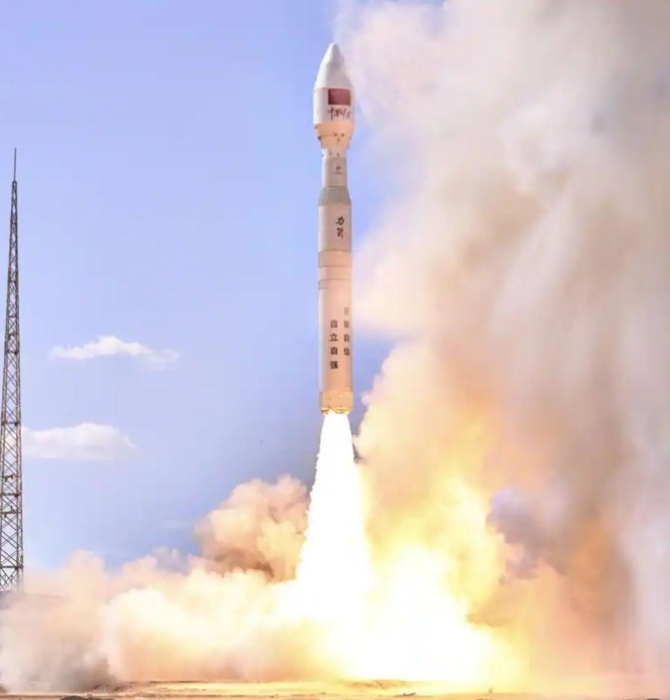3486Views

Pakistan’s Nuclear Weapons Program Continues Evolving Quwa Premium
Bilal Khan
Founder of Quwa, Bilal has been researching Pakistani defence industry and security issues for over 15 years. His work has been cited by Pakistan's National Defence University (NDU), the Council of Foreign Relations, Bulletin of Atomic Scientists, Centre of Airpower Studies and many others. He has a Hons. B.A in Political Science and Masters of Interntional Public Policy from Wilfrid Laurier University in Waterloo, Ontario, Canada.
On 28 May, Pakistan celebrated the 26th anniversary of its Chagai-I and Chagai-II nuclear tests, which it carried out in 1998 in response to India’s Pokhran-II tests. Since becoming a nuclear power, Pakistan’s program has evolved through the inclusion of miniature warheads as well as an expanding line of launch platforms, especially airborne and sea-based systems.
However, the security environment in South Asia has also changed since 1998. At that time, Pakistan’s security leadership may have assumed that the nuclear umbrella would be sufficient enough to thwart an Indian ingression into Pakistani territory. But in 2019, the Indian government ordered the Indian Air Force (IAF) to carry out air strikes across the Line of Control (LoC). The resulting Balakot Incident led to an air skirmish between Pakistan and India, which ended with a confirmed loss of one IAF MiG-21bis and IAF Mi-17 helicopter.
The Balakot Incident showed Pakistan’s security leadership two things:
First, the nuclear deterrence was no longer enough to dissuade India from engaging in cross-border strikes. Granted, the incident involved India striking non-state actors, but it escalated into a skirmish with all the potential to expand into a full-scale war. Therefore, the deterrence element did not work; therefore, Pakistan saw that its nuclear element needed to be paired with a conventional element that can respond to or intercept low-intensity Indian strikes.
Second, a strong conventional response – such as the Pakistan Air Force’s (PAF) counter-operation, “Swift Retort” – dampened India’s willingness to engage in future Balakot-type operations. Basically, future Balakot-type operations would guarantee a Pakistani response and, in turn, erode the integrity of India’s border areas.
Hence, one can expect Pakistan to approach deterrence in a holistic manner that encompasses both nuclear and conventional means. In fact, the growth of conventional capabilities would support Pakistan’s nuclear program by resulting in new delivery systems and platforms.
Background of Pakistan’s Nuclear Program
Pakistan initiated its nuclear weapons program shortly following India’s “Smiling Buddha” test in May of 1974. However, Pakistan’s ambition to develop nuclear weapons was already in place years before then due to a series of significant events that shook its confidence in alliances, international organizations, and other broadly accepted measures.
When Pakistan initiated its nuclear weapons program, the country’s security leadership concluded that “international institutions [were] capricious and alliances [were] unreliable.”[1] Ultimately, Pakistan was solely responsible for its national interests and, as such, must pursue those interests on its own with whatever means available.
Thus, Pakistan carried out its nuclear weapons program through two core streams: a plutonium project under the Pakistan Atomic Energy Commission led by Dr. Munir Akram Khan, and a uranium project at Khan Research Laboratories led by Dr. Abdul Qadeer Khan.
According to Dr. Abdul Qadeer Khan, Pakistan had acquired the capacity to assemble a first-generation nuclear weapon in 1984. In effect, Pakistan became an undeclared nuclear power by the end of the 1980s, which ultimately prompted Washington to actively pressure Islamabad to scale its program back, or lose access to arms and aid. This led to the Pressler Amendment, which had stopped Pakistan from acquiring vital conventional arms, most notably the F-16. In May 1998, Pakistan carried out its Chagai-I and Chagai-II tests, thus overtly establishing its status as a nuclear weapons state.
A ‘Credible Minimum Deterrence’
In the early years following its tests, Pakistan would define its nuclear program as one of “minimum deterrence.” In reality, however, Pakistan was largely vague about what it meant by ‘deterrence.” It did not offer any details about how many warheads it needed and delivery systems it required to deter enemies from entering its territory.
End of excerpt (579/1279 words)
Log in or subscribe to read the rest of the article
Note: Logged in members may need to refresh the article page to see the article.


